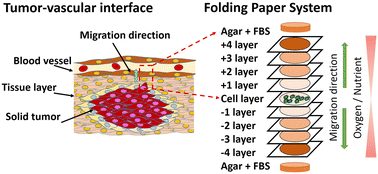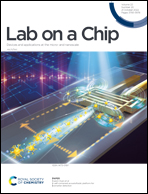Cell marathon: long-distance cell migration and metastasis-associated gene analysis using a folding paper system
Abstract
A high mortality rate was found in cancer patients with distant metastasis. Development of targeted drugs for effectively inhibiting cancer metastasis is the key for increasing therapeutic success. In the current study, a folding paper system was developed to mimic a tumor–vascular interface for the study of long-distance cell migration. Correlation between the cell migration distance and metastasis-associated gene was successfully analyzed by disassembling the stacked paper construct. The result revealed that the migration distance and number of migrated cells were highly correlated to cell characteristics. Moreover, immunocytochemistry was directly conducted on the paper layer to study the signaling pathway. Kelch-like and protein tyrosine phosphatase families were examined and the PTPN13 gene was shown to regulate long-distance cell migration. By analyzing the phosphorylated mTOR, the PTPN13 gene was further confirmed to be a tumor suppressor gene that inhibits long-distance cell migration. The folding paper system provides an alternative approach for long-distance cell migration. Metastasis-associated gene expression can be analyzed to potentially develop targeted drugs for cancer metastasis inhibition.

- This article is part of the themed collection: Lab on a Chip HOT Articles 2022


 Please wait while we load your content...
Please wait while we load your content...